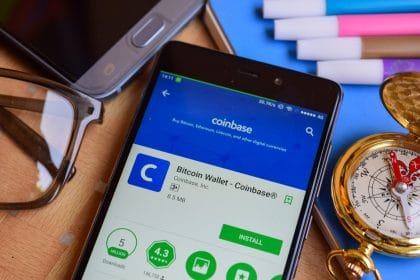Moss is doing its part to help reduce global carbon emissions. Its MCO2 token represents tokenized carbon credit, which can be traded anywhere in the world.
Global warming is a very relevant topic that direly warrants a clear course of action. One way through which anyone can participate in the use of carbon credit. Moss is a project tokenizing such credit on the Ethereum blockchain. An important step has been taken to address global climate change with a modern solution.
What Is Carbon Credit Again?
The concept of carbon credit is rather generic but offers a lot of different options. Through these tradable certificates or permits representing the “right” to emit one ton of CO2, a genuine “market” can be created to address global warming. Through these credits and their associated carbon markets, national and international attempts have been launched to address climate change.
Mitigating the overall growth in concentrations of greenhouse gases is a tough balancing act. With a carbon credit – representing one ton of CO2 or equivalent gases – emissions can be “traded”. By capping national greenhouse gas emissions, leftovers are allocated through regulated sources via these internal markets.
Ultimately, the goal is to push toward a future where low emission becomes the norm. As these emission-oriented projects generate credits, it is possible to create financing for carbon reduction schemes on a global scale.
Until now, the market for carbon credit has been analog, inefficient, and non-transparent. Through innovative technology, such as the blockchain, all of these drawbacks can be alleviated. Moss has succeeded in digitalizing one of the few remaining analog sectors of the global economy.
Moss Does Its Part
As a relatively new company, Moss is doing its part to help reduce global carbon emissions. Its MCO2 token represents tokenized carbon credit, which can be traded anywhere in the world. At the time of writing, MCO2 is traded, since August 2020, on the FlowBTC exchange, located in Brazil. Contrary to other assets traded on this platform, MCO2 is not a cryptocurrency. Instead, it is a utility token intended to be used for reversing climate change.
To date, this effort has proven to be successful in many different ways. Following a successful $3.3 million seed round – led by Brazilian sustainability authorities and C-level company owners – Moss has secured carbon contracts for the coming four years. This will ensure 20% of the global carbon contract supply can be used to conserve Amazonia forested land. To put this into perspective, this is equal to 1 million hectares.
Keeping in mind how nearly 15 football fields of the rainforest are lost every 15 minutes, something needs to be done quickly. Rather than waiting for politicians and governments to make decisions, the MCO2 token allows anyone to participate. This solution caters to individuals and corporations alike.
Additionally, the Amazon rainforest is only the first major initiative for Moss. Through its tokenization of the carbon credit inventory, numerous efforts can be launched in the years to come. Several projects are already on the list, as there is a lot of work to be done to save our planet. With this utility token’s help, that fight becomes a bit more manageable once everyone does their part.
The Numbers to Date
Keeping in mind how Moss was established recently, the project has proven to be successful already. Since Q1 2020, the team has bought and sold more than 900,000 tons of CO2. This is far more than any effort launched by the Brazilian government to date. A good start during the first 8 months, but there is still a lot of work to be done.
For the team, the tokenization of carbon credits makes a lot of sense. A token makes compensation for carbon emissions far more accessible. Moreover, as this token is issued on the Ethereum blockchain, it can be incorporated into other projects, products, services, and protocols. It is, effectively, accessible by anyone in the world.
More importantly, this token offers other benefits to consider, as well. First of all, there is improved security of carbon credit transactions on a global scale. Secondly, it becomes easier to track any carbon credit-related activity. The blockchain allows for unprecedented transparency in real-time. Finally, a tokenized asset like this one is more suited for a modern age than traditional solutions.
As MCO2 makes it safer to acquire carbon credits and offset one’s carbon footprint, Moss puts itself in a prime position. The company can sell credits to address the hike in demand from technology giants, including Apple, Microsoft, and Amazon.
Additionally, other major companies – Shell and Saudi Aramco, to name a few – are also doubling down on becoming carbon neutral. With a global solution in place, all of this can be realized quicker than originally anticipated.
Conclusion
Carbon offsetting solutions will only become more important over time. Climate change is a very real and serious problem that has been taken too lightly for far too long. If renowned scientists are to be believed, we don’t have 50 years to address these concerns. We either act now or pay the price for it in a few decades. There is no in-between option anymore.
Introducing more efficiency into the global carbon credit market and tokenizing the carbon offsetting service leads to a sustainable future. Moss is the biggest platform for carbon credit today, with 20% of the global market share. Its technology has been vetted by CertiK and Perkins Cole, among other leading services.
Through innovation and transparency, Moss aims to change the world one step at a time. It is a real project, with working technology and a proven track record for saving our planet.
Founder and editor at BTC PEERS. Andrey writes about financial experiments, DeFi, cryptocurrency, and blockchain.




